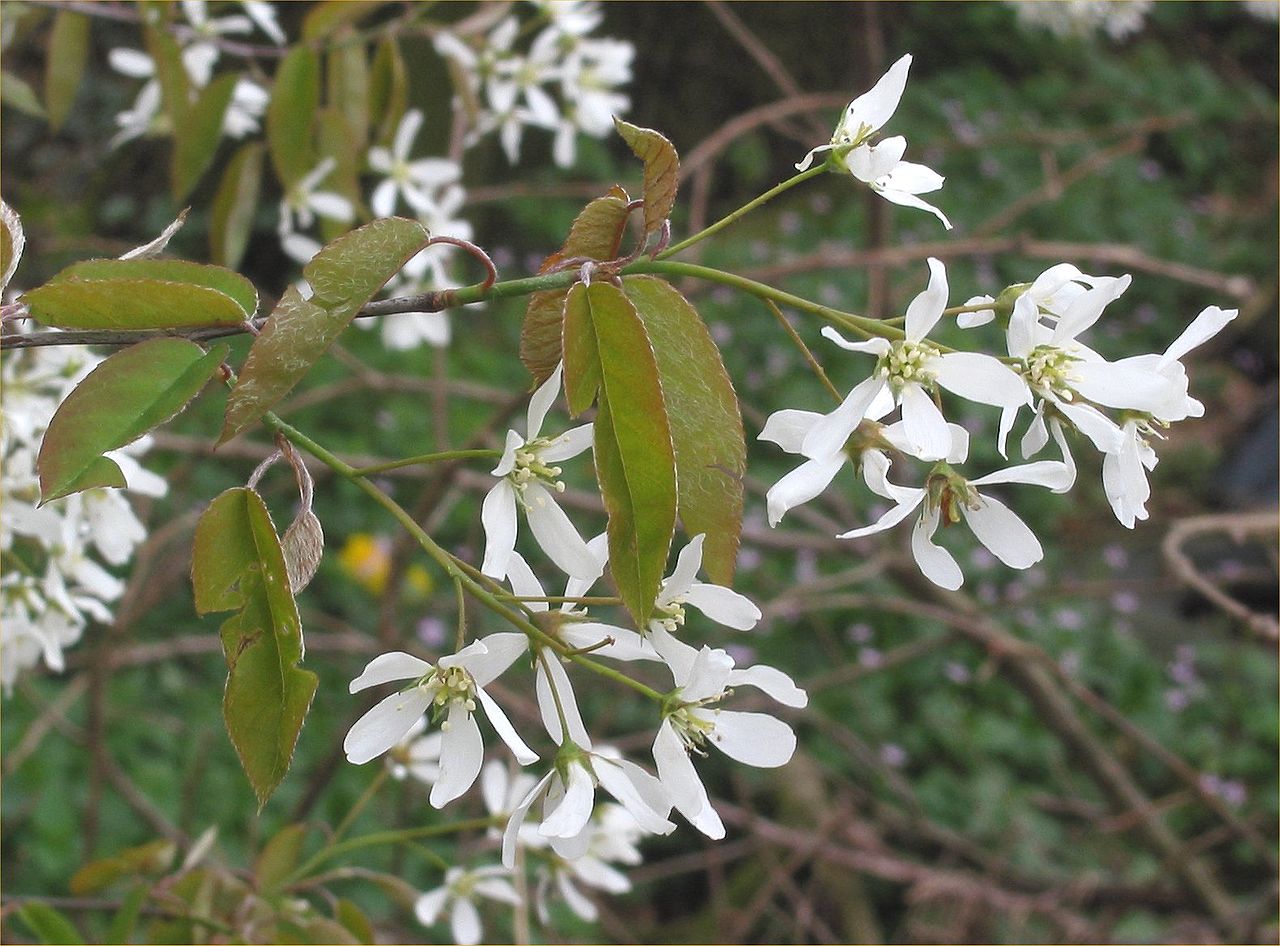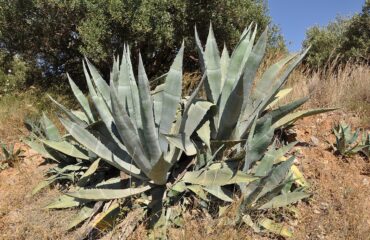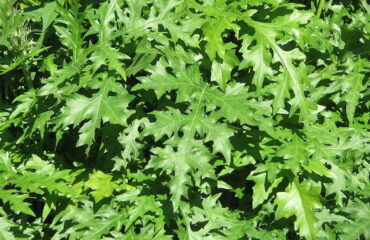Amelanchier canadensis, commonly known as Canadian Serviceberry, is a deciduous shrub or small tree native to eastern North America. It is valued for its multi-seasonal interest: white, showy flowers in early spring, followed by edible berries in summer, and vibrant fall foliage. The berries, which are sweet and juicy, are popular with both wildlife and humans and can be used in jams, jellies, and pies. The plant’s bark is smooth and grey, adding winter interest. Canadian Serviceberry is often used in naturalized landscapes, woodland gardens, and as a specimen tree.
Preferred Growing Conditions:
- Soil Type: Prefers well-drained, loamy soil; thrives in soil enriched with organic matter.
- Sunlight: Grows best in full sun to partial shade; can tolerate a range of light conditions but performs best with at least 4-6 hours of direct sunlight daily.
- Temperature: Hardy in USDA zones 4-8; tolerates a wide range of temperatures but prefers temperate climates.
- Water Needs: Moderate; requires regular watering during the growing season but can tolerate short periods of drought once established.
Amelanchier Canadensis (Canadian Serviceberry) Propagation Methods:
1. Seed Propagation:
Growing Amelanchier canadensis from seeds is a viable method, though it requires patience as the seeds need a period of cold stratification to germinate.
- Seed Collection and Preparation:
- Collect seeds from ripe berries in late summer to early autumn.
- Clean the seeds by removing the flesh and rinsing them thoroughly.
- Seeds require cold stratification to break dormancy. Place seeds in a moist medium (such as sand or peat moss) and refrigerate at around 40°F (4°C) for 90-120 days.
- Sowing Techniques:
- After stratification, sow seeds in a seed tray or small pots filled with a well-draining seed-starting mix.
- Sow the seeds on the surface and cover lightly with soil.
- Keep the soil consistently moist but not waterlogged.
- Place the trays in a bright location with temperatures around 65-75°F (18-24°C).
- Germination Requirements:
- Seeds typically germinate in 2-4 weeks after stratification.
- Once seedlings emerge, provide bright, indirect light.
- Maintain soil moisture and gradually acclimate seedlings to outdoor conditions.
- Care for Seedlings:
- When seedlings have developed several true leaves and are sturdy enough to handle, transplant them into individual pots or directly into the garden.
- Choose a location with similar growing conditions to the parent plant, such as a sunny to partially shaded area with well-drained soil.
- Seed-grown plants may take several years to reach maturity and begin fruiting.
2. Softwood Cuttings:
Propagating Amelanchier canadensis from softwood cuttings is a reliable method, especially during the growing season.
- Types of Cuttings:
- Use softwood cuttings taken in late spring to early summer when the plant is actively growing.
- Preparation:
- Select healthy, non-flowering shoots and cut 4-6 inch sections just below a leaf node.
- Remove the lower leaves and dip the cut end in rooting hormone to encourage faster rooting.
- Planting:
- Insert the cuttings into a well-draining potting mix, such as a blend of peat and perlite or a commercial rooting mix.
- Water lightly to settle the soil and place the pots in a bright, indirect light location.
- Cover the pots with a plastic bag or place in a propagation tray with a clear lid to maintain humidity.
- Rooting:
- Roots should begin to form within 4-6 weeks.
- Once roots are established and new growth appears, gradually acclimate the cuttings to lower humidity.
- Transplant the rooted cuttings into individual pots or directly into the garden, ensuring they are planted at the same depth as they were in the propagation medium.
3. Suckers:
Amelanchier canadensis often produces suckers, or shoots, that emerge from the base or roots of the parent plant. These can be used to propagate new plants.
- Collection and Preparation:
- Collect suckers in early spring or autumn when the plant is not in active growth.
- Carefully dig around the base of the plant to expose the suckers and their root system.
- Use a clean, sharp knife or pruners to separate the suckers from the parent plant, ensuring each sucker has its own roots.
- Planting:
- Plant the suckers in individual pots filled with a well-draining potting mix or directly in the garden in a suitable location.
- Place them at the same depth as they were growing around the parent plant and water lightly to settle the soil.
- Rooting and Growth:
- Suckers will continue to develop roots and shoots over several weeks to months.
- Maintain consistent moisture and provide protection from extreme weather until they establish and begin to grow.
4. Layering:
Layering is another effective method for propagating Amelanchier canadensis, especially for low-lying branches that can be easily bent to the ground.
- Timing:
- Best done in early spring or early summer when the plant is actively growing.
- Method:
- Select a healthy, flexible branch near the base of the plant.
- Bend the branch down to the ground and make a shallow cut or wound on the underside where it will be buried.
- Apply rooting hormone to the wound to encourage rooting.
- Bury the wounded section of the branch in the soil, securing it with a U-shaped pin or a rock.
- Keep the soil moist and leave the branch in place for several months to allow roots to develop.
- Transplanting:
- Once roots have formed, cut the branch from the parent plant and transplant it to a suitable location in the garden.
Care for Newly Propagated Plants:
- Place new plants in a location with full sun to partial shade and well-draining soil.
- Water regularly during the growing season, especially in the first few years after planting.
- Protect young plants from pests and diseases, and provide support if needed to prevent wind damage.
- Apply a balanced, slow-release fertilizer in early spring to encourage healthy growth and fruit production.
Common Challenges and Solutions:
- Powdery Mildew: Ensure good air circulation around plants and avoid overhead watering. Treat with fungicides if necessary.
- Fire Blight: Monitor for signs of bacterial infection and prune out affected branches. Disinfect pruning tools to prevent the spread.
- Aphids and Spider Mites: Monitor for common pests and treat infestations with insecticidal soap or neem oil.
Additional Tips:
- Prune young trees to shape them and remove any dead or damaged branches.
- Mulch around the base to retain moisture and suppress weeds.
- Regularly inspect for pests and diseases, especially in dense foliage areas.
- Canadian Serviceberries are excellent for wildlife gardens, attracting birds and pollinators.
Conclusion:
Propagating Amelanchier canadensis provides a wonderful opportunity to grow this versatile and attractive plant in your garden. Whether you choose to start from seeds, use softwood cuttings, propagate suckers, or use layering, with proper care and attention, Canadian Serviceberry will thrive and offer year-round beauty and delicious berries to your landscape.
Share this article



